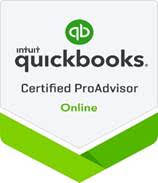Marie’s musings… (it should actually be called a balancing act)
Each month, you may anxiously await the reports that provide the numbers that help you manage your business. (Or…maybe not.) Revenue, net income, total expenses, and payroll costs are just a few of the items that you should be monitoring on your profit and loss statement. Although those numbers will help you meet and improve your business goals the question I have for you today is a little different—what numbers are you using to determine if you are meeting your life goals and priorities?
And yes, I keep envisioning what I want my days, my weeks and my months to look like. Then I plan my schedule. I like a full, vibrant life filled with travel, people, entrepreneurial adventure, gardening and cooking. Dave and I just came back from a wonderful 18-day vacation where we visited eight amazing countries in Eastern Europe. Do we sometimes struggle to squeeze in the time? You bet. Is it worth it? Absolutely!
One of my clients recently was upset because she is working full-time in her business without compensation. She simply wanted one day off and money from the business to spend the way she wants. She’d like to feel like she isn’t working for free. It may sound silly, but this is one of the issues I cover in my Seven Key Steps to Business Profitability. Many business owners have wonderful gross revenues; at the end of the month, however, there is nothing left. You must pay yourself first, so I gave her permission to take a day off (more than one) and let her know that she needs to reward and pay herself monthly. If you don’t think that you can, start with a small amount and increase it as your business grows. The secret to time off and money in your pocket is leveraging.
Leveraged vs. Unleveraged Revenue
Leveraging your business revenue is a way to work less while making more money. You earn more revenue when you are not involved in a one-on-one effort. And, as a side benefit—you reach more people with less effort.
There are a few specific ways to leverage your business efforts. Measuring leverage is business-specific; however here are some examples of revenue that are not leveraged: seeing clients one at a time, selling hours-for-dollars services and working without a staff or virtual team. Revenues that are partially leveraged include group programs such as classes and events like webinars and conferences as well as hourly consulting that your staff performs with your limited oversight. And revenue that is fully leveraged includes product sales. Once the product is developed, it takes little incremental time to sell (unless you’re in retail).
Let’s assume this business owner has a staff of two people. Both hourly consulting and training classes are partially leveraged because the business owner spends time teaching, consulting, and supervising.
Sample business revenue streams
| Revenue | Leveraged | Unleveraged | |
| Book Sales | $50,0000 | $50,000 | |
| Hourly Consulting | $70,000 | $0 | $70,000 |
| Training Classes | $50,000 | $35,000 | $15,000 |
| Total | $170000 | $85,000 | $85,000 |
| Ratio | 50% | 50% |
If your revenue streams are flexible, you can work on moving more of your business income over to the leveraged side. To create more leverage in the sample business, the owner could sell or develop more products, hire another teacher, hire an additional consultant, and/or hire someone to review the consulting work of the employees.
Days Off vs. Days Worked
If you want time off from your business, try tracking the time off that you take. Whatever you measure and pay attention to, you’ll have more of. Let’s assume a 5-day work-week; there are about 250 working days in a year, not including about 10 holidays.
So if you take five 1-week vacations from work, that will be 25 days, resulting in 10% time off rate. If you want to increase it to 25% time, off, start planning it, automate your systems and find team members that will help while you are gone.
Your Lifestyle Goals
What’s on your “bucket list?” (This is a list of things you want to do in your lifetime.) My husband wants a trip into space and we’re hoping the technology is commercialized soon. My bucket list is more earthly in that I’d like to vacation to all the continents. I love visiting different cultures and learning more about history.
Whatever is on your bucket list, make sure that you write it down. Then figure out how you can schedule it in. You can have fun with your planning and schedule—make it a game in logistics. Here are some more ideas to think about:
- The number of customers you have that really fit your ideal client and how many more you need to go.
- How many countries (or states) you want to visit each year vs. how many you’ve already visited.
- How many volunteer hours or dollars you spend versus how much more you like to.
Make sure you write your goals down or create a vision board. When you put your goals on paper, they seem more real and achievable. Hopefully, life beyond the profit and loss statement will get you closer to your dream life. And, find someone to hold you accountable for your goals. If you’d like more information about achieving goals, download the FREE Seven Key Steps to Your Business Profitability today!









